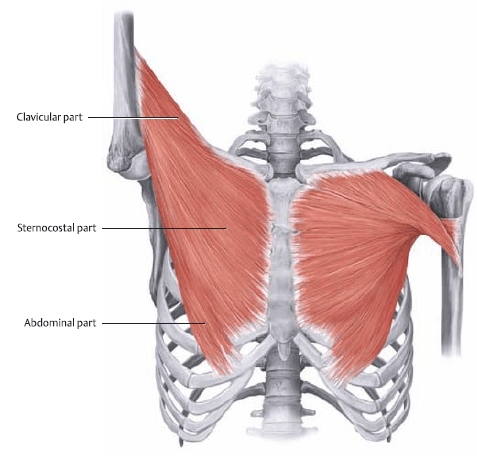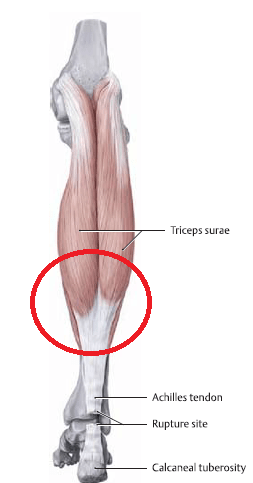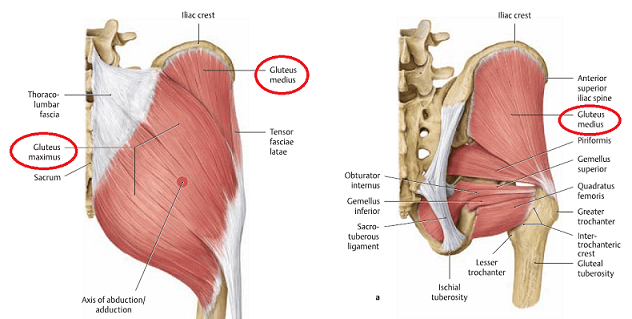Do you want to improve your recovery and feel supple, before and after climbing?
Then foam rolling might be a great tool for you.
It’s a popular way to reduce sore muscles and to increase recovery after climbing.
It started as a hype with tools like foam rollers and massage sticks. It’s great because you massage your fascia.
However, is this what happens? And does self-myofascial release really benefit your climbing?
In this blog, you’ll discover that myofascial release does improve sports performance and how you can do it yourself. I included videos with instructions on how to foam roll important muscles for climbing and how to roll according to your goal. Then, at the end of this article, I offer perspective on the self-myofascial release hype and what this means for you as a climber.
1. What is Self-Myofascial Release?
Self-myofascial release is a form of self-massage using a foam roller or a massage stick.
The goals are to improve blood flow, reduce fibrous adhesions (scar tissue that joins several or more muscle fibers together, making them stiff and less functional), absolve trigger points, and displace the fascia (connective tissue).
Hence the name self-myofascial release.
In a recent blog, I discussed trigger point therapy for climbing. I talked about myofascial trigger points and how to treat them. Moreover, I explained what they are and how and where to find them.
I also mentioned that there’s still discussion about the origin of the trigger point phenomenon. And that there’s no objective way to measure a trigger point.
Which obviously makes it hard to say you’re massaging myofascial trigger points with a foam roller, right?
I argue though that, regardless of this trigger-point dispute, self-myofascial release does have excellent benefits.
2. The Benefits of Self Myofascial Release
Self-myofascial release is a new performance-enhancing strategy. There’s relatively little scientific research on the subject, and there’s also little research into climbing. Meaning there’s no scientific research into foam rolling and its effect on climbers or climbing performance. Nevertheless, I have good reasons to assume that the benefits observed in other athletes will also apply to climbers.
In the research that’s been done, there’s some consistency in the benefits found for foam rolling.
Below are 5 interesting advantages of self-myofascial release.
2.1 Increases Range of Motion
Foam rolling increases range of motion.1–4 This effect was found in ankle, hip, and shoulder flexibility.
Still, using a foam roller wasn’t more effective than static stretching.5 The thing is though, that static stretching reduces performance right after. And this is something you don’t want during a warming-up.
2.2 No Negative Impact on Sports Performance
The beautiful thing about foam rolling is that, unlike static stretching, it doesn’t impair athletic performance.6,7 This makes it a great tool to use for short bouts of time before training or competition.
So, how long should you roll during a warming-up?
Currently, there’s no set protocol for foam rolling but these are factors you should consider:
- A warming-up has a limited amount of time
- You should focus your rolling on the muscles you’re going to use while climbing
- Roll rather shorter than longer to gain maximum effect in the least amount of time
I recommend rolling up to 1 minute and then move on to the next muscle.
2.3 Improves Force Output
There’s some evidence that foam rolling increases force output. One study, for example, found that participants performed better on the squat jump test.6
Another study measured with an Electro-Myography (EMG) that the maximum force output of the calf muscles went up after a foam rolling session.8
2.4 Speeds Up Recovery
Some studies show that self-myofascial release after exercise reduces the amount of Delayed Onset Muscle Soreness (DOMS) or simply, sore muscles.1,9,10
Why does this happen?
On the one side, this might be due to an increase in blood flow which helps to clear out residual waste products after training. And on the other side, the massage might reduce pain signals to the brain.
2.5 Reduces Perceived Instability
A small study in adolescent tennis players found that foam rolling increases range of motion and decreases perceived instability. While having no negative effect on serving power and acceleration.11
I found this study particularly interesting because it looked at functional outcomes for the tested individuals. As things go, flexibility is only worth so much if you can’t translate it to your specific sports performance.
Now you have an idea of the benefits of self-myofascial release, are you ready to try it?
Here’s how.
3. How to do Self-Myofascial Release
As I mentioned at the beginning of this blog, popular self-myofascial tools are the foam roller and massage stick. But a lacrosse ball or a tennis ball is often used as well. These balls are smaller objects and allow you to penetrate deeper into your musculature than a foam roller.
For a climber, a tennis ball is a great tool because it helps you go deeper into your musculature, it makes your self-massage more intense. If you use these tools this tool in your warming-up, be sure to go easy on yourself. A warming up is not the moment to break up scar tissue or anything of the sort. You’re preparing to climb. So, go easy on yourself and roll with nothing more than slight discomfort.
Now that’s resolved, let’s have a look at how to use a foam roller.
These are the things you should consider:
- Always move in the direction of your muscle fibers
- Try to relax your body while massaging yourself
- Move slowly
- More pain doesn’t mean more effect
- Painful areas can be a sign of tension and are worth a little more rolling
- Don’t force in painful areas as more pain leads to a tensioning reflex (imagine when someone wants to hit you in the stomach, you automatically tense your abdomen) which in turn tenses your muscles instead of relaxing them
And most importantly, why are you foam rolling?
Is it part of your warming-up? Or is it to reduce sore muscles? Or to break up adhesions?
Look at the table below to get an idea of how to use a foam roller according to your goals:
| Goal | Warming Up | Sore Muscles | Break-up Adhesions/Trigger Points |
| Intensity (0-10) | 3 | 5 | 7-9 |
| Accepted Pain Level (0-10) | 3 | 3 | 7 |
| Time | +-1 minute/muscle | 3-5 minutes/muscle | Until muscle loosens up |
| Where to Roll | Entire Muscle | Entire Muscle | Where it hurts most/you feel tension and/or resistance |
Let’s now look at 8 useful foam rolling exercises for climbers:
3.1 Latissimus Dorsi (Big Back Muscle)
The big back muscles are part of the most used muscles while climbing. On the one side because the lats internally rotate the upper arm, and on the other side, because they adduct the upper arm (brings it closer to the body). The movement you’re making every time you pull on a grip.
Since the lats run over your ribs, foam rolling them can be painful. If this is the case wear a thick sweater or use a soft foam roller. Moreover, be sure to twist your body to address all parts of the latissimus dorsi.
3.2 Pectoralis Minor (Small Chest Muscle)
The pectoralis minor is a small muscle that originates at the coracoid process, a bony feature of your shoulder blade that sticks out to the front of your body, and inserts on rib 3-5. As a result, it pulls your scapula up over your rib cage. This is exactly the movement you need when you are pulling over a hold. Thus, a muscle you use often while climbing.
3.3 Pectoralis Major (Big Chest Muscle)
Climbers often do push-ups to balance out all the pulling movements. Ironically, you do use your pectoralis major while climbing. As things go, the pec major is, just like the latissimus dorsi, an adductor and an internal rotator of the upper arm. And every time your raise your arm you use your big chest muscle as well.
Besides that, you’re most likely not a professional climber and thus have a normal day job. This often includes sitting and/or standing for prolonged periods. This increases the chance on shortened and tense pectoralis muscles.
In light of these postural deficiencies, it’s important to know, that when the pec major tenses, it pulls your shoulder girdle forward inhibiting the muscles of your back. Thus, the suppler your pec major the better you can position your shoulder girdle, and the more pulling force you can generate.
To roll the pectoralis major efficiently, you should extend your arm overhead. Because that’s when the fibers are aligned in the same direction, as you can see in the image below.

3.4 Triceps Surae (Calf Muscles)
Even though you use your leg muscles less than your arms while climbing, the calf muscles do have to work when you stand on small edges.

The calves are easy to roll (and often very painful in my case). Be sure to roll plenty at the muscle tendonous junction (the part where your calf muscles change into your Achilles tendon) as well, this greatly alleviates tension.
3.5 Infraspinatus (Rotator Cuff Muscle)
Since the infraspinatus muscle is small it’s best to use a tennis ball for foam rolling. The infraspinatus is often a tense muscle in climbers since it is both an external rotator and an internal rotator of the shoulder joint. Below 90 degrees abduction it’s an external rotator, and above that, an internal rotator.
The infraspinatus runs laterally from the scapula to the upper arm, which means that to release it best, you have to move sideways. I believe the easiest and most effective way to foam roll the infraspinatus is to do it against a wall.
3.6 Teres Minor
The teres minor is also part of the rotator cuff, just like the infraspinatus. You’ll find the teres minor right below the infraspinatus, with the same fiber direction. This means that you can apply the same foam rolling technique, just a little bit lower.
3.7 Glutes
Your glutes help you to generate momentum while climbing and to press your hips to the wall. There are actually 3 parts to the glutes, the gluteus maximus, gluteus medius, and gluteus minimus.
The easiest way to roll them all is by rotating a bit of your foam roller while massaging yourself.

3.8 Mobilizing the Thoracic Spine Roll with a Foam Roller
You could call foam rolling the thoracic spine my guilty pleasure. It’s my go-to quick fix for thoracic spine mobility and never fails to deliver.
As a climber, your thoracic spine has to move in all directions to enable you to move well up the rock. Besides that, the thoracic spine is the base of your shoulder girdle. Meaning, that any deficiency there will translate into a deficiency in the movement of your scapula, shoulder, elbow, and hand.
Therefore, the thoracic spine is a very important area to take care of as a climber!
By rolling your thoracic spine you mobilize and sometimes manipulate (thus the cracking of your back) the facet joints. These are the joints you have on both sides of each vertebra.
Remember though, that in this case, you’re not rolling on a muscle but the spinous processes of your vertebrae. These can be sensitive. If they are, either wear more clothes to protect your back or use a softer foam roller.

Besides that, never ever use this technique if you have any acute trauma to the spine, bony deformities, bone health issues (like osteoporosis), or inflammation in your spine.
That being said, the safe way to do this mobilization is by:
- Folding your hands across your chest
- Flexing your spine to create tension
- Rolling slowly from top to bottom and back again
4. A Critical Note on Self Myofascial Release
As I mentioned at the beginning there’s contradictory information around self-myofascial release. I believe this is partly due to the hype that revolved around its conception, but also due to the little research that has gone into foam rolling.
Fascia and connective tissue have become a popular area of treatment. Yet, like with trigger points, there’s no proof that foam rolling does something to the fascia.12 Besides that, researchers that looked if self-myofascial release displaced the aponeuroses (a sheet of connective tissue which is similar to a flat tendon) in the lower leg, found no proof of it. Equally, they found no change in the length of the connective tissue.13
So, when someone argues that foam rolling is good for your fascia, it isn’t based on facts.
But does this matter?
I think it doesn’t. Because for you as a climber the benefits are more important than the underlying mechanism.
5. Take-Home Messages
Foam rolling is a great tool for warming up, post-exercise, and breaking up adhesions. It improves range of motion and it might improve recovery, increase force output, and reduce perceived instability.
Remember to roll according to your goal and to breathe deeply in and out while you roll. This ensures you relax your muscles, thus increasing the effectiveness of your foam rolling.
And again, the mechanism for the benefits of foam rolling isn’t known and there is no proof that self-myofascial release does something with your fascia. Nevertheless, even if the name self-myofascial release is wrong, the positive effects on sports performance are real.
Now, go try it yourself!
6. Citations
- Beardsley C, Skarabot J. Effects of self-myofascial release: A systematic review. J Bodyw Mov Ther. 2015;19(4):747-758. doi:10.1016/j.jbmt.2015.08.007
- Cheatham SW, Kolber MJ, Cain M, Lee M. THE EFFECTS OF SELF‐MYOFASCIAL RELEASE USING A FOAM ROLL OR ROLLER MASSAGER ON JOINT RANGE OF MOTION, MUSCLE RECOVERY, AND PERFORMANCE: A SYSTEMATIC REVIEW. Int J Sports Phys Ther. 2015;10(6):827-838. http://www.ncbi.nlm.nih.gov/pmc/articles/PMC4637917/.
- Kalichman L, Ben David C. Effect of self-myofascial release on myofascial pain, muscle flexibility, and strength: A narrative review. J Bodyw Mov Ther. 2017;21(2):446-451. doi:10.1016/j.jbmt.2016.11.006
- Fairall RR, Cabell L, Boergers RJ, Battaglia F. Acute effects of self-myofascial release and stretching in overhead athletes with GIRD. J Bodyw Mov Ther. 2017;21(3):648-652. doi:10.1016/j.jbmt.2017.04.001
- Škarabot J, Beardsley C, Štirn I. Comparing the effects of self-myofascial release with static stretching on ankle range-of-motion in adolescent athletes. Int J Sports Phys Ther. 2015;10(2):203-212. http://www.ncbi.nlm.nih.gov/pubmed/25883869%0Ahttp://www.pubmedcentral.nih.gov/articlerender.fcgi?artid=PMC4387728.
- Richman ED, Tyo BM, Nicks CR. Combined Effects of Self-Myofascial Release and Dynamic Stretching on Range of Motion, Jump, Sprint, and Agility Performance. J Strength Cond Res. 2019;33(7):1795-1803. doi:10.1519/JSC.0000000000002676
- Shalfawi SAI, Enoksen E, Myklebust H. Acute Effect of Quadriceps Myofascial Tissue Rolling Using A Mechanical Self-Myofascial Release Roller-Massager on Performance and Recovery in Young Elite Speed Skaters. Sports. 2019;7(12):246. doi:10.3390/sports7120246
- MacDonald, GZ, Penney, MDH, Mullaley, ME, Cuconato, AL, Drake, CDJ, Behm, DG, and Button D. An acute bout of self-myofascial release increases range of motion without a subsequent decrease in muscle activation or force. J Strength Cond Res. 2013:812-821.
- Laffaye G, Da Silva DT, Delafontaine A. Self-Myofascial Release Effect With Foam Rolling on Recovery After High-Intensity Interval Training. Front Physiol. 2019;10(October). doi:10.3389/fphys.2019.01287
- Schroeder AN, Best TM. Is self-myofascial release an effective pre-exercise and recovery strategy? A literature review. Curr Sports Med Rep. 2015;14(3):200-208. doi:10.1249/JSR.0000000000000148
- Le Gal J, Begon M, Gillet B, Rogowski I. Effects of Self-Myofascial Release on Shoulder Function and Perception in Adolescent Tennis Players. J Sport Rehabil. 2018;27(6):530-535. doi:10.1123/jsr.2016-0240
- Behm DG, Wilke J. Do Self-Myofascial Release Devices Release Myofascia? Rolling Mechanisms: A Narrative Review. Sports Med. 2019;49(8):1173-1181. doi:10.1007/s40279-019-01149-y
- Yoshimura A, Inami T, Schleip R, Mineta S, Shudo K, Hirose N. Effects of Self-myofascial Release Using a Foam Roller on Range of Motion and Morphological Changes in Muscle: A Crossover Study. J Strength Cond Res. May 2019. doi:10.1519/JSC.0000000000003196
